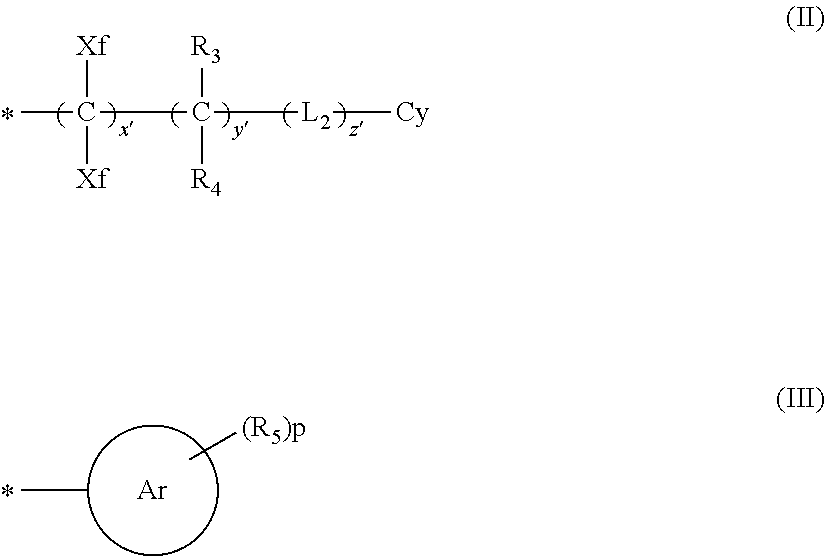Pattern forming method, chemical amplification resist composition and resist film
a technology applied in the field of pattern forming method, chemical amplification resist composition and resist film, can solve the problems of difficult to find out the appropriate combination of resist composition and pattern formation, and achieve the reduction of scum defect, line width variation (lwr), and exposure latitude (el) and focus latitude (dof)
- Summary
- Abstract
- Description
- Claims
- Application Information
AI Technical Summary
Benefits of technology
Problems solved by technology
Method used
Image
Examples
examples
[0597]The present invention is described below by referring to Examples, but the present invention should not be construed as being limited thereto.
synthesis example
Synthesis of Resin (1)
[0598]In a nitrogen stream, a three-neck flask was charged with 40 g of cyclohexanone and heated at 80° C. (Solvent 1). Monomers corresponding to the following repeating units were dissolved in a molar ratio of 40 / 10 / 40 / 10 in cyclohexanone to prepare a 22 mass % monomer solution (400 g), and polymerization initiator V-601 (produced by Wako Pure Chemical Industries, Ltd.) in a concentration of 7.2 mol % based on the monomers was added thereto and dissolved. The resulting solution was added dropwise to Solvent 1 over 6 hours. After the completion of dropwise addition, the reaction was further allowed to proceed at 80° C. for 2 hours. The reaction solution was left standing to cool and then poured in 3,600 ml of heptane / 400 ml of ethyl acetate, and the powder precipitated was collected by filtration and dried, as a result, 74 g of Resin (1) was obtained. The weight average molecular weight of the obtained Resin (1) was 9,800 and the polydispersity (Mw / Mn) was 1.8....
example 1
[0608]An organic antireflection film, ARC29A (produced by Nissan Chemical Industries, Ltd.), was coated on a silicon wafer and baked at 205° C. for 60 seconds to form an antireflection film having a thickness of 86 nm.
[0609]Resist Composition Ar-1 was coated on the antireflection film and baked (Prebake, PB) at 100° C. for 60 seconds to form a resist film having an average thickness of 100 nm.
[0610]The formed resist film was exposed through a 6% halftone mask having a 1:1 line-and-space pattern with a line width of 75 nm by using an ArF excimer laser scanner (PAS5500 / 1100, manufactured by ASML, NA: 0.75, Dipole, σo / σi=0.89 / 0.65). Thereafter, the resist film was baked (Post-Exposure Bake, PEB), at 100° C. over 60 seconds and then dipped in the developer shown in Table 5 for 30 seconds. After this development treatment, the film was rinsed using the rising solution shown in Table 5, and then, the wafer was spun at a rotation speed of 4,000 rpm for 30 seconds to form a 1:1 line-and-spa...
PUM
| Property | Measurement | Unit |
|---|---|---|
| wavelength | aaaaa | aaaaa |
| temperature | aaaaa | aaaaa |
| thickness | aaaaa | aaaaa |
Abstract
Description
Claims
Application Information
 Login to View More
Login to View More - Generate Ideas
- Intellectual Property
- Life Sciences
- Materials
- Tech Scout
- Unparalleled Data Quality
- Higher Quality Content
- 60% Fewer Hallucinations
Browse by: Latest US Patents, China's latest patents, Technical Efficacy Thesaurus, Application Domain, Technology Topic, Popular Technical Reports.
© 2025 PatSnap. All rights reserved.Legal|Privacy policy|Modern Slavery Act Transparency Statement|Sitemap|About US| Contact US: help@patsnap.com



